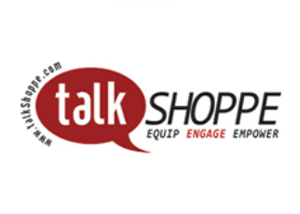Today we are covering solutions to needing to buy a home today without having to sell your old home first. In this real estate market a shortage of homes for sale, buyers that don’t have to sell another home first can make a more compelling home purchase offer. We will be sharing stories from some people who have succeeded in getting the home they wanted using some of these ideas. Tom King, our real estate appraiser expert, will be sharing what he sees in our local home market.
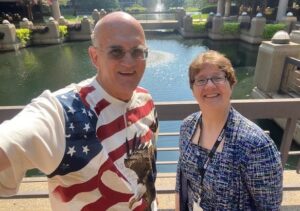
What do YOU want to accomplish with YOUR mortgage? Make your plan. Let’s work your plan. If the deal woks for you today, let’s do it today. Connect with me at www.JoGarner.com. You can also call me at (901) 482-0354. Subscribe to get weekly Real Estate Mortgage Shoppe podcasts with show notes at www.JoGarner.com
To Your Success,
Jo Garner, Mortgage Loan Officer NMLS# 757308 (901) 482-0354 Jo@JoGarner.com
(equal credit lender)
______________________________________________________________________________
Let’s step across the bridge….
Good morning, Memphis! Welcome to our internet listeners and podcast listeners across the 50 states! You’re on Real Estate Mortgage Shoppe. I’m your host, Jo Garner, Mortgage Loan Officer. You can connect with me at www.JoGarner.com. Our general topic is ARE YOU BUYING A HOME BUT NEED TO BRIDGE THE FINANCING GAP UNTIL THE OLD HOME SELLS? Subscribe to get our weekly blogposts with podcasts at www.JoGarner.com. Call us while we are live today July 31st, 2021 at 901 535 9732.
INTRODUCING TOM KING, APPRAISAL EXPERT
We have Tom King back in the studio. Tom has been appraising homes in Shelby County, Tipton County and Fayette County Tennessee for over 40 years. He has an up close view of what the home buying and home selling activity looks like during this trifecta of low mortgage rates, high equity and low inventory. Tom, tell our listeners a little about yourself and the types of appraisal you do for your clients. (Tom introduces himself & talks about the types of appraisals he does)
(Jo)
Offer Accepted To Buy My Dream Home-But Can’t Sell My Current Home Right Away-Zana Zagar’s story
![]()
Zana Zagar (not her real name) received some good news and bad news all on the same day. The good news—the sellers accepted Zana’s offer to buy the home Zana had searched long and hard to find. The bad news? The family selling to Zana her dream home needed to close quickly. Zana would not have time to get her current home ready to sell before she would need to close on her new home.
Zana and I explored a number of creative tactics she could take to get her the funds she needed to make the large down payment to keep her mortgage payment low on the new home, even though she would not be able to use the equity on the sale of her current home in time to use it for the down payment on the new home.
One of the solutions for Zana was to get a departure home equity line from her bank on the equity in her current home to use for a large down payment on the new home. With the big down payment on the new home, this would set her up for the permanently low payment on the new home.
Zana could go ahead and close and move into her new home and enjoy a low mortgage payment on the new house because being able to access the equity on her current home with the temporary equity line to use until she could sell her old home.
Low Inventory-High Demand Causes Interim Financing To Be More Popular
We are experiencing a record low number of homes for sale. At the same time, low mortgage rates and rising rental rates are driving people into the home buying market. It is normal to walk into multiple home purchase offers on the same house. The bridge loan and other interim financing tools are wildly popular because they allow the buyer to make a home purchase offer without having to make the offer contingent on the sale of their current home.
Advantages of Using Bridge Type Financing
-
Your peace of mind knowing you aren’t forced to sell your current home before buying your new one.
-
Your offer is more competitive if you are not making the home purchase offer contingent on the sale of your old home.
-
Your comfort level on the financing on the new home is better since you used interim loan secured on the old house, giving you proceeds to put a substantial down payment on the new home. The large down payment on purchasing the new home lowers the permanent mortgage and the permanent house payment. You have your loan terms where you want it. When you sell the old house, you pay off any mortgages and the interim loan that was secured on the old house.
Disadvantage of Using Bridge Type Financing
The borrower is required to qualify with the lenders for all of the loans on the current home and the new home. The borrowers have to pay the mortgages on both properties until the old home sells.
What do YOU want to accomplish with YOUR mortgage. Make your plan. Let’s work your plan. If the deal works for you today let’s do it today. Connect with me at www.JoGarner.com
Tom, what are your insights on the real estate transactions that are requiring some type of temporary gap financing. (Tom starts to launch his topic until 9:15 break)
You’re listening to Real Estate Mortgage Shoppe. I’m your host, Jo Garner, Mortgage Loan Officer. Connect with me at www.JoGarner.com When we come back Tom King will be giving us a closer look at the what is happening with our real estate values… Our phone lines are open. We want to hear your thoughts on financing to bridge the gap so you can buy a home without selling your old home first. (901) 535-9732.
2nd segment after 9:15 break: The Look Back Memphis Trivia Contest is sponsored by John and Jennifer Lawhon of Lawhon Landscape (901) 754-7474 the Lawhon’s can help you plan your landscaping if you have a BIG, BIG project or a smaller project . The Lawhons are giving away a $25 gift card to the first person with the correct trivia answer. If you know the answer to our trivia question, call us at 901 535 WREC 901 535-9732
ANSWER: THE HERNANDO DESOTO BRIDGE WAS FIRST OPENED TO TRAFFIC IN AUGUST 1973
QUESTION: What month and year was the Hernando-DeSoto bridge first opened for traffic after it was first constructed?
HINT #1 The Hernando DeSoto Bridge connecting Memphis, TN to West Memphis, Arkansas was constructed in segments between 1963 and 1968 but was not opened to traffic until later.
HINT #2 Back in the late 1960’s the bridge was supposed to costs $12 million dollars and originally was supposed to be open to traffic in 1971. But it costs $57 million (equivalent to $256,000 today) and was delayed past the planned opening date.
The Hernando de Soto Bridge is a through arch bridge carrying Interstate 40 across the Mississippi River between West Memphis, Arkansas, and Memphis, Tennessee. The design is a continuous cantilevered cable-stayed steel through arch, with bedstead endposts. Memphians also call the bridge the “New Bridge”,[2] as it is newer than the Memphis & Arkansas Bridge (carrying Interstate 55) downstream, and the “M Bridge”, due to its distinctive shape. It is of similar construction to the Sherman Minton Bridge between Louisville, Kentucky, and New Albany, Indiana.
On May 11, 2021, traffic across the bridge was halted indefinitely after a crack had been found on part of the bridge’s load carrying structure.
Preliminary planning for the river crossing began in 1960 as part of Interstate 40 alignment studies for the Memphis – Little Rock corridor, which was constructed in segments between 1963 and 1968. Before the Hernando de Soto Bridge was completed, traffic going across the river was carried across the Mississippi River by the Interstate 55/US Highway 64/70/79/61 Memphis & Arkansas Bridge crossing, located 2 miles (3.2 km) southwest.
The two states initially feuded over the cost of paying for the bridge. Tennessee officials believed that both states should equally pay for the bridge, while Arkansas officials wanted Tennessee to shoulder a larger share of the cost due to its larger population. Both states eventually agreed to a compromise where Tennessee funded 60% of the cost, and Arkansas the remaining 40%.[3] Both states also initially disagreed on the design of the bridge; the original design called for longer through arches and a lower vertical clearance.[3]
Construction of the Hernando de Soto Bridge began on May 2, 1968.[3] Initially planned for completion in 1971, the project experienced multiple delays.[3] The double-arch bridge was opened to automobile traffic on August 2, 1973. A dedication ceremony for the bridge occurred on August 17, 1973.[4] Initially expected to only cost $12 million (equivalent to $68.7 million in 2021[5]), the final price tag was approximately $57 million (equivalent to $256 million in 2021[5]).[4]
The bridge is named for 16th century Spanish explorer Hernando de Soto who explored this stretch of the Mississippi River, and died south of Memphis.
___________________________________________________________
TOPICS COVERED BY TOM KING, REAL ESTATE APPRAISER
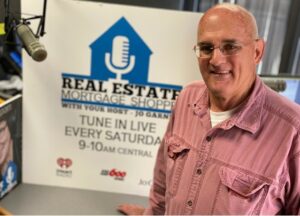
Bill King Appraisal Company
- Describe the current real estate market in the Mid-South to explain why motivated buyers are compelled to buy a home before they sell their current home.
-
Describe some repairs or improvements homeowners need to make to their home to prepare it for sale. (Mention some of the repair items that mortgage companies tend to require to be completed before the mortgage company will allow the loan to close)
-
Relate some home buyer/home seller stories of how some cash buyers come out ahead hiring you to do the appraisal on the home they are going to buy.
-
Explain the firewall between mortgage companies and appraisals. How does the system work?
TOPICS COVERED BY JO GARNER, MORTGAGE LOAN OFFICER:
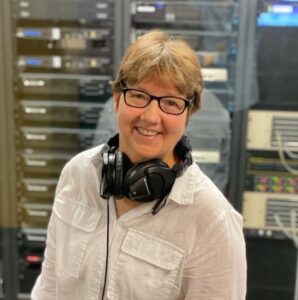
“The desire of gold is not for gold. It is for the means of freedom and benefit.” Ralph Waldo Emerson
Valuable friends like valuable coins come in handy when you are in a pinch, especially if your banker is also one of your friends.
Over the years, mortgage customers have told me their stories that could have ended in disaster if not for a friend at the bank. Bank loans are varied and can help bridge the gap if the mortgage customer cannot qualify for a mortgage loan at the moment they need it. Temporary bank loans and “piggyback seconds” have saved more than a few real estate closings.
Bank loans come in a wide variety, with some secured on assets, including business assets, a car, or stocks and bonds. On the other hand, some are not secured at all as in the case of a signature loan or credit card. In this chapter, we explore bank loans that are secured on real estate. If the borrower doesn’t pay, the bank, like the mortgage company, will foreclose and take back the property.
Bank loans tend to have a shorter term than traditional mortgages, and boast more flexibility on how their terms are structured. Traditional mortgages usually have a fixed interest rate for 10, 15, 20, 25, or 30 years. Some mortgages offer adjustable-rate mortgage terms, but the index, and annual and lifetime caps on the adjustable-rate programs are clearly set in place. Banks have regulations, too, but enjoy more flexibility to design their programs freely. Be aware: bank terms may not be as desirable to the borrower over a long period of time.
When a borrower purchases a home with intent to own for over five years, she knows the set terms on the mortgage. The mortgage company will not be calling her and demanding payment in full before the maturity date unless the borrower has violated terms of the mortgage or deed of trust agreement. The mortgage rate is usually fixed and stable for the life of the loan.
Bank loans typically are not.
Consult a financial advisor. Take the time to compare loan products offered by different banks to better ensure that you get the right loan product to hit your goal.
Types of Bank Loans
The standard mortgage is offered for the purpose of buying a home. Some of these programs are used to refinance a primary residence, vacation home, or for a one-to-four-unit investment property. The mortgage rate is usually fixed, locked in for the entire term of the loan.
Some mortgage products have a regimented adjustable-rate feature. To maintain their supply of funds to lend, mortgage companies sell the right to the income stream on these mortgages to quasi-government enterprises Fannie Mae and Freddie Mac. As long as the mortgage company has adhered to Fannie Mae and Freddie Mac guidelines and restrictions concerning the property, it can sell the rights to Fannie Mae and Freddie Mac for fresh funds to lend to the next customer. These guidelines include loan-to-value, and the borrower’s credit, income, and assets
The Home Equity Line of Credit (HELOC) is a revolving line of credit secured as a lien on the real estate property, which acts much like a credit card that you can access when you need it. The interest rates are variable with no safety caps, although some lenders may offer a fixed rate for a specified period. If there are closing costs at all, they are minimal. The borrower pays an annual fee for the use of the credit line and a prepayment penalty if the HELOC gets closed prematurely.
In the first few years of the loan, which the lender calls the draw period, the borrower may be permitted to make interest-only payments on the balance. Later, following the draw period, the borrower will be required to pay P&I.
Most banks will loan up to 80% loan-to-value or combined-loan-to-value, and sometimes up to 90% combined. The interest rate is usually higher and credit restrictions tighter if the bank lends on the higher limit.
Example of the combined-loan-to-value structure:
Value of the home $300,000
Maximum 90% combined-loan-to-value ($300K × 90%) $270,000
Existing first mortgage balance $150,000
Max HELOC funds to lend on 90% CLTV ($270K-$150K) $ 120,000
The HELOC can also be used in combination with other loans to purchase a property. It can be used as a piggyback loan behind a purchase-money first mortgage. It can also be used as a “bridge loan” to provide down payment funds so the borrower’s first mortgage does not require him to pay their private mortgage insurance.
Homebuyers use the piggyback combo and bridge loans when they need to purchase their new home before selling the old one.
They get a first mortgage through a mortgage company. Since the home buyer does not have the proceeds from the sale of the old home yet, they use a HELOC second mortgage for the new home’s down payment. Using the piggyback loan for down payment helps the borrower to secure a low enough mortgage balance to avoid having to pay the lender’s private mortgage insurance. When the old home finally sells, the proceeds can be used to pay off the piggyback.
Sale price on new home $400,000
New first mortgage $320,000
New piggy-back second mortgage $ 40,000
Down payment from buyer’s funds $ 40,000
If the existing home sells for $150,000 paying off the remaining mortgage balance of $100,000, profits would be plenty enough to pay off the $40,000 piggyback loan … should the borrower choose to use the funds for that purpose.
Without a piggyback loan, the buyer would have to pay for private mortgage insurance to benefit the lender because the loan amount would have exceeded 80% loan-to-value.
Compare the cost using the piggyback second mortgage on the new home with using an Equity Line of Credit on the old home.
Sometimes the price on the new mortgage is much lower if there is not a piggyback in use. It may be a better deal to get a HELOC on the old house for $40,000, instead. Even if you pay more closing costs to the bank to get the HELOC on the old house, it still may turn out much better than paying points or a higher rate on your new first mortgage.
![]()
Samir Sader and his wife Sabba
Smooth Transition with a Combo Loan
Samir Sader and his wife, Sabba, sat at the kitchen table of the house they had called home for many years.
“We have made so many memories here. We’re going to miss this place,” Sabba sighed as she gazed around the kitchen and into the family room.
“The hard part will be packing up and moving fifteen years of our stuff to the new house,” Samir added.
Samir and Sabba had finally found a home that would give them rest from the busy city and the noise. They had been visiting with a builder who called to let them know that he had a ready-made house with everything on their wish list.
Their first buyer was supposed to close in the next two weeks but backed out due to a family emergency.
If Samir and Sabba wanted the house, they would need to buy it right away or the builder would have to take the next offer.
Samir and Sabba had originally planned to sell their old home first because they did not owe much on the house and would realize a net profit of about $100,000. With those profits, they could easily pay down the purchase price of a new, more expensive home, to easily afford the mortgage payment without disturbing their retirement money.
How could they close on the new home right away before having a chance to sell the old home?
The Saders’ mortgage officer connected them with a banker who agreed to give them an equity line of credit for $100,000 secured on their old home. They could use the proceeds from the equity line of credit to make the large down payment they wanted for the new home.
Samir and Sabba agreed to buy the new home from the builder and close in two weeks. The appraisal on the Saders’ old home came in at $200,000. The balance on the existing first mortgage was a little over $75,000.
The maximum the bank could loan them on a second mortgage HELOC for the old home was 90% of the total value … minus the first mortgage balance. That would mean $180,000 minus $75,000, which comes to $105,000.
This would give the Saders the $100,000 they needed to put down on the new home. The bank said they could get the money to the Saders in a week and a half.
“The best things in life are unexpected,” Sabba said, smiling at the closing table.
“The best thing about this home purchase is that we won’t have to rush to move all our things in one day,” Samir added as he scribbled his signature on the last home closing document.
For Samir and Sabba, the equity line of credit was the key puzzle piece that made a quick buy possible. With a piggyback second mortgage on the new home, the rate on the new mortgage would have been more expensive because of the combined first mortgage and the piggyback loan. The price was better using the HELOC. The equity line of credit on the old home would be paid off as soon as their house sold, leaving the Saders with just the one low-balance mortgage and affordable monthly payment.
The HELOC is popular for combo transactions like the Saders’ home purchase, as well as for covering family emergencies, buying a car, and more. Another popular Home Equity Loan has a fixed rate and works like a second mortgage. There are not as many flexible ways to use this program as there are for the HELOC.
The bridge loan works like the combo transaction with the mortgage and credit line. There are a number of different bridge loans, but most all of them provide the down payment and costs of purchasing a new home before the old home is able to sell.
REAL ESTATE TIP OF THE WEEK (Tom King reminds homebuyers and sellers the importance of the name appearing on the deed of the property being sold to match the name on the purchase contract. If the name showing from the deed as owner of record does not match the name of the seller on the home purchase contract, delays an occur until the names are made to match. )
Jo’s tip: If you have credit lines available or if you can use a home equity line of credit on your current home or both—consider paying cash to buy your next home and refinance it after closing to recapture your credit line money. When the current home sells, you can pay off the home equity line.
ANNOUNCEMENTS:
Talk Shoppe offers free networking & education to anyone interested in real estate or in business. Talk Shoppe meets every Wednesday 9A-10A by going to www.TalkShoppe.com (shoppe), then click the Upcoming Events tab. You will see the virtual zoom web address. This Wednesday August 4th, 2021 join us We are also meeting IN PERSON at Concord Career College at 5100 Poplar Ave, Unit 132, Memphis, TN. Mark Fields of Evans and Petree Law Firm presents “What to Think About When Developing A New Product or Service”
Thank you to Talk Shoppe sponsors Greg and Kelly Inman of Next Day Access. Are you or a family member feeling trapped in your home due to a physical handicap or disability? Next Day Access can install stairlifts, wheel chair ramps and grab bars. Call Greg and Kelly at Next Day Access (901) 617-4675
Are you looking for a way to talk with your customers about the benefits of buying your product or service? Ninety percent of consumers listen to the radio. Let me show you a way to reach your audience on radio with a 20% discount on the retail price. Connect with me after the show at 901 482-0354 or at jo@jogarner.com
2. Salute to our US Olympic athletes. We are cheering for you!
4. Subscribe at www.JoGarner.com and you can get our weekly blog posts with podcasts conveniently in your inbox.
5. Real Estate Mortgage Shoppe reminds you to MAKE YOUR PLAN. LET’S WORK YOUR PLAN. IF THE DEAL WORKS FOR YOU TODAY, DO IT TODAY.
SPECIAL NOTE: REAL ESTATE MORTGAGE SHOPPE RECOMMENDS THAT YOU CONSULT WITH A FINANCIAL, LEGAL OR OTHER CERTIFIED, LICENSED PROFESSIONAL BEFORE ACTING OR INVESTING ON ANYTHING YOU HEAR OR SEE FROM THE CONTENT ON THIS SHOW OR BLOG POSTS. THE INFORMATION WE SHARE ON REAL ESTATE MORTGAGE SHOPPE IS GENERAL IN NATURE MEANT FOR GENERAL EDUCATIONAL PURPOSES ONLY. ALL EXAMPLES GIVEN FOR ILLUSTRATION PURPOSES ON REAL ESTATE MORTGAGE SHOPPE AND ARE BASED ON TRUE STORIES BUT WE USE FICTIONAL CHARACTERS AND DO NOT DIRECTLY REFLECT REAL PEOPLE OR EXACT DETAILS IN ANY OF THE SITUATIONS.
QUOTE CORNER:
The quote of the week: Ralph Waldo Emerson-“The desire of gold is not for gold. It is for the means of freedom and benefit.”
____________________________________________________________________________________
REJOINDERS:
-
Tim Flesner Business Consultant with Business Management Solutions (901) 213-7830
-
Leah Anne Morse of All Things New (organizing home & office. Coordinating, downsizing, moving and estate sales ) www.AllThingsNewWTN.com
-
Miranda Griffin of www.HealthyMidSouth.net simple ways to stay healthy longer
Transitional Music: “Seventh Bridges Rd” by the Eagles; “Hello” by the Beatles; “Bridge of Light” by Pink; “Memphis” by Johnny Rivers.
CALLERS:
Donna Skaarer, realtor with Kaizen Realty (901) 489-4182
Joe Burnette, The Bank of Fayette County (901) 466-3800
___________________________________________________________________
ABOUT TOM KING, REAL ESTATE APPRAISER
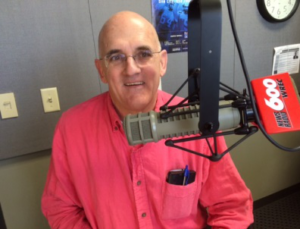
Tom is a well- respected and sought after appraiser in Memphis, Tennessee. He is a second generation appraiser with 40 years of experience. He has been elected to the Memphis Area Association of Realtors Board of Directors three times.
Tom is a certified residential appraiser in Tennessee. He have appraised over 20,000 homes in his career. A graduate from the University of Tennessee with a degree in real estate, Tom is also a Certified Relocation Professional (CRP). Tom also has vast experience in dealing appraising real estate for pre-listing sales, cash buyers, divorce settlements, estate settlements. (901) 487-6989
ABOUT JO GARNER-MORTGAGE LOAN OFFICER:
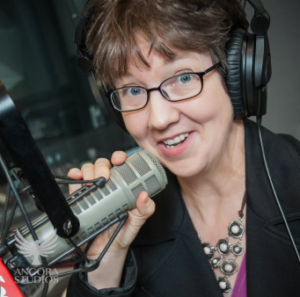
WHAT DO YOU WANT TO ACCOMPLISH WITH YOUR MORTGAGE?
www.JoGarner.com (901) 482 0354 jo@jogarner.com twitter @jogarner NMLS# 757308 (currently working with Sierra Pacific Mortgage, Inc)
“Whatever YOUR personal priorities are, my job is to help you get the mortgage terms that will give you bragging rights when you talk about it and help you score on hitting your goals .”
As a mortgage loan officer, my job is to help you get to the benefits you want from your financing terms. What is most important to you? I can help you find the financing terms that will help you get to what you want. What is your comfort level on a house payment? How much are you comfortable paying down,? What type of financing do you need to get the house you want to buy or refinance?
Different clients have different priorities in life—some are buying their first home with very little down payment funds. Some are recovering from medical challenges, divorces or preparing to send children to college and some are embarking on a long term goal of buying properties to build rental income.”
Jo Garner is a mortgage officer with extensive knowledge in tailoring mortgages to her customers who are refinancing or purchasing homes all over the country. She offers conventional, FHA, VA or other loan programs for refinancing and purchases.
Jo can help you look at rent vs buy, when it makes sense to refinance, how to get the best deal on your home purchase financing.
Jo Garner has been in the real estate/financing business for over 25 years. She got her start in Portland, Maine where she first began her real estate career. She received her real estate education from the University of Southern Maine and was personally mentored in San Diego, California by Robert G. Allen, author of Nothing Down, Creating Wealth and The Challenge.
On moving back to West Tennessee in 1987, she went into business buying and selling discounted owner-financed notes secured on real estate. In 1990 Jo went to work for a residential mortgage company and has been a mortgage loan officer for over 25 years. Her goal is to offer excellent, affordable service to her customers, tailoring the loan programs to the specific needs of her clients.
In addition to her work in the mortgage field, Jo Garner is the primary sponsor and founder of Talk Shoppe in Memphis. www.TalkShoppe.com Jo Garner also host the radio show Real Estate Mortgage Shoppe airing on News Radio AM 600 WREC and iHeart Radio with podcasts and show notes published on www.JoGarner.com


